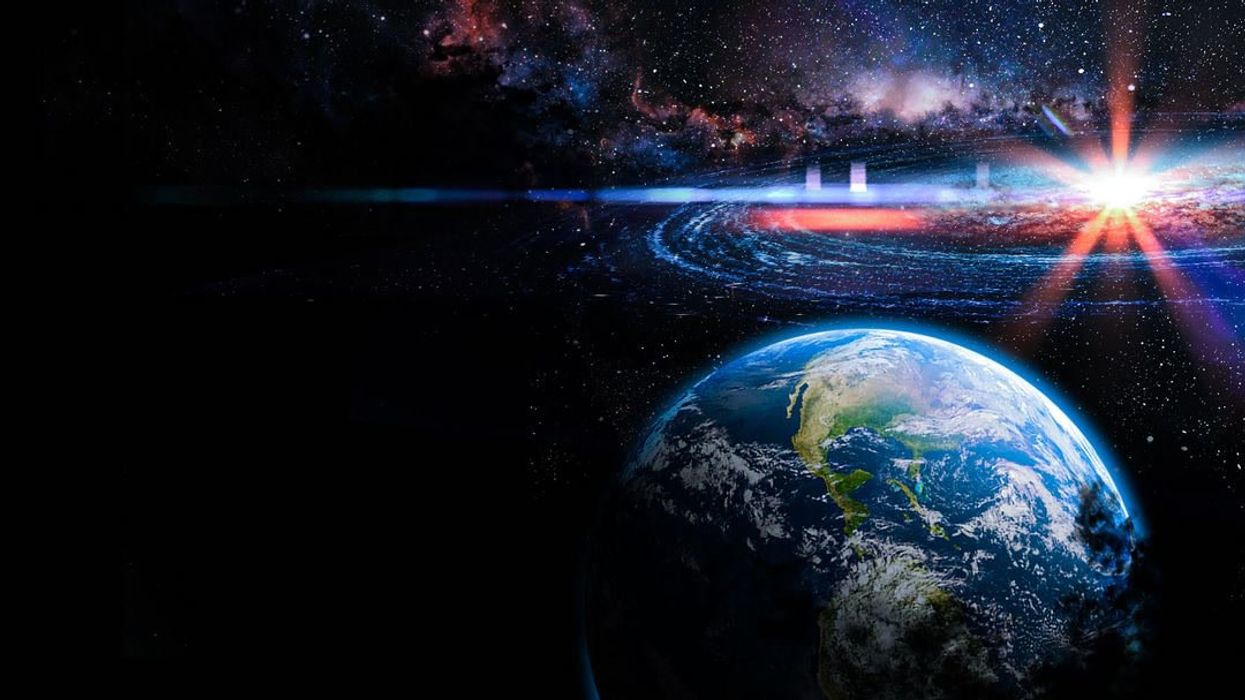Harriet Brewis
Mar 17, 2024
What If Earth Were Teleported to the Edge of the Universe?
Underknown / VideoElephant
It’s hard to imagine a world without phones, buildings and even people. But, once upon a time, the Earth was a soup of fiery magma.
It took a few hundred million years for the planet to start to cool and form oceans of liquid water, and then another few million years for photosynthesising bacteria to evolve.
But the question of how the very first cells – and thus the very genesis of life as we know it – were created, has left experts scratching their heads since time immemorial.
Now, however, a team of scientists in California may have found the key to unravelling this 4 billion-year-old mystery.
Researchers at The Scripps Research Institute have come up with a potentially groundbreaking explanation of how protocells – the precursors to modern living cells – first emerged.
Their findings, published on 29 February, suggest that a key chemical process, called phosphorylation, occurred earlier than expected.
Phosphorylation is the attachment of phosphate groups to a molecule, causing them to chemically progress and enact a diversity of functions.
More structurally complex protocells would have been capable of harbouring chemical reactions and dividing with a diverse range of functionalities, the experts noted in a news release about their work.
And by working out how protocells formed, scientists can better understand how early evolution could have taken place.

“At some point, we all wonder where we came from,” Scripps Research chemist Ramanarayanan Krishnamurthy, who co-authored the paper, said in a statement.
“We’ve now discovered a plausible way that phosphates could have been incorporated into cell-like structures earlier than previously thought, which lays the building blocks for life.
“This finding helps us better understand the chemical environments of early Earth so we can uncover the origins of life and how life can evolve on early Earth.”
Krishnamurthy and his colleagues study how chemical processes occurred to cause the simple chemicals and formations that were present before the emergence of life on prebiotic Earth.
In their paper, which was published in the journal Chem, they sought to examine if phosphates may have been involved during the formation of protocells.
Phosphates are present in nearly every chemical reaction in the body, so Krishnamurthy suspected they may have been present earlier than previously thought.
It has long been thought that protocells formed from fatty acids, but researchers couldn’t figure out how protocells transitioned from a single chain to a double chain of phosphates, which is what allows them to be more stable and harbour chemical reactions, as the Scripps Research team note their press release.
In order to investigate this, the experts mimicked plausible prebiotic conditions – the environments that existed before life emerged.

First, they identified three likely mixtures of chemicals that could potentially create vesicles – spherical collections of fats similar to protocells. The chemicals used included fatty acids and glycerol, which may have existed on early Earth.
Next, they observed the reactions of these mixtures and added additional chemicals to create new mixtures. These solutions were cooled and then repeatedly heated and shaken overnight to promote chemical reactions.
Krishnamurthy and his fellow researchers then used fluorescent dyes to analyse the mixtures and judge if vesicle formation had occurred.
They also varied the pH and the ratios of the components in some samples to better understand how these factors impacted the formation of vesicles. Plus, they looked at the effect of metal ions and temperature on the vesicles’s stability.
“The vesicles were able to transition from a fatty acid environment to a phospholipid environment during our experiments, suggesting a similar chemical environment could have existed 4 billion years ago,” fellow author Sunil Pulletikurti, a postdoctoral researcher in Krishnamurthy’s lab, said in the same statement.
He and his teammates concluded that fatty acids and glycerol may have undergone phosphorylation to create more stable, double chain structures.
For example, glycerol-derived fatty acid esters may have led to the creation of vesicles with different tolerances for metal ions, temperatures, and pH—a critical step in diversifying evolution.
Scripps Research scientists reveal how first cells could have formed on Earthyoutu.be
“We’ve discovered one plausible pathway for how phospholipids could have emerged during this chemical evolutionary process,” biophysicist Ashok Deniz, who also worked on the study, said.
“It’s exciting to uncover how early chemistries may have transitioned to allow for life on Earth. Our findings also hint at a wealth of intriguing physics that may have played key functional roles along the way to modern cells.”
Still, despite their compelling findings, there’s much work to be done.
Now, Deniz, Krishnamurthy and their team aim to work out why some of the vesicles behaved differently from others and thus better understand the dynamic processes of protocells.
But their work certainly offers up hope that one day, we’ll figure out exactly how life first emerged from those primordial fires.
Sign up for our free Indy100 weekly newsletter
Have your say in our news democracy. Click the upvote icon at the top of the page to help raise this article through the indy100 rankings
Top 100
The Conversation (0)














